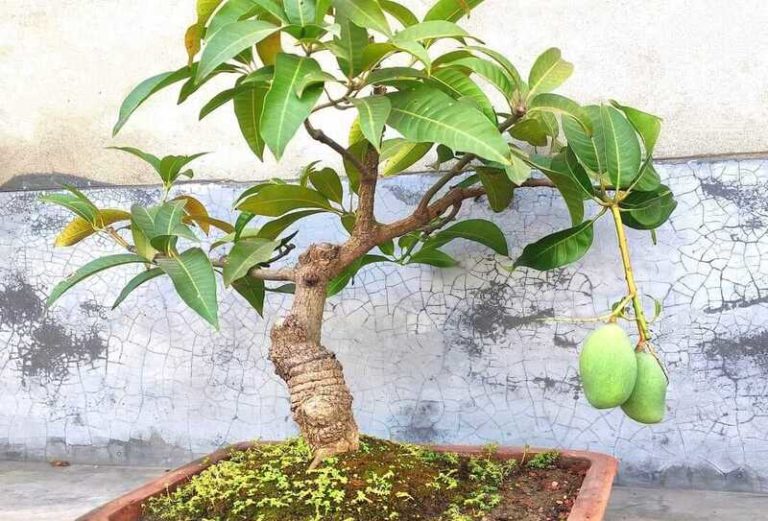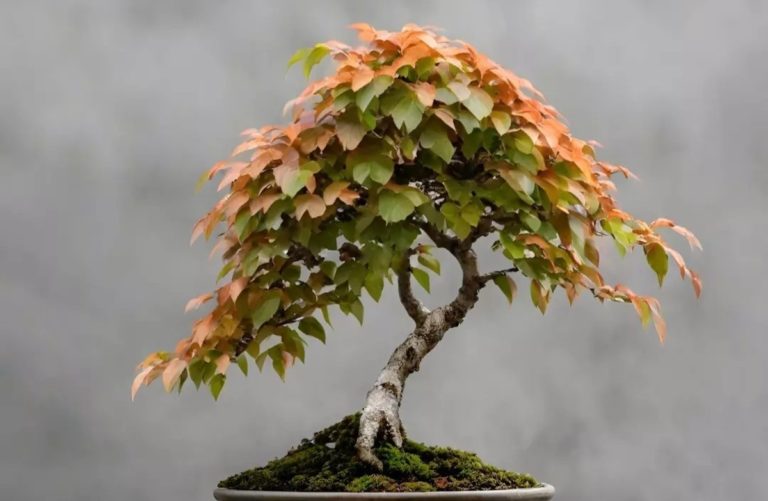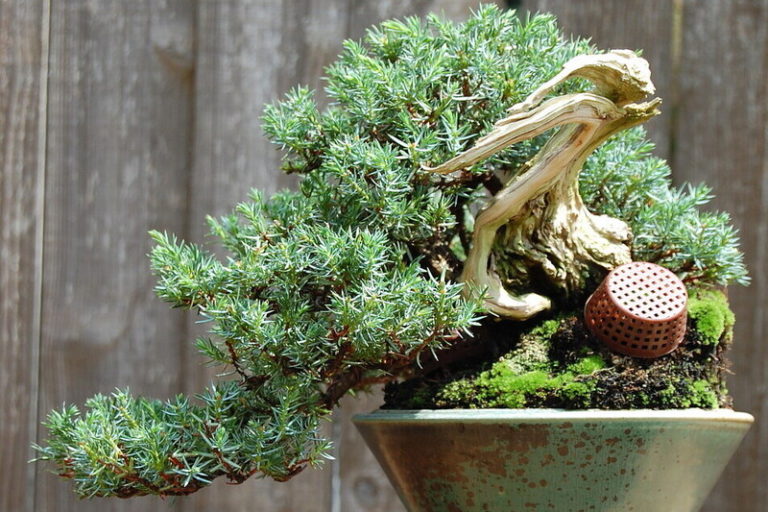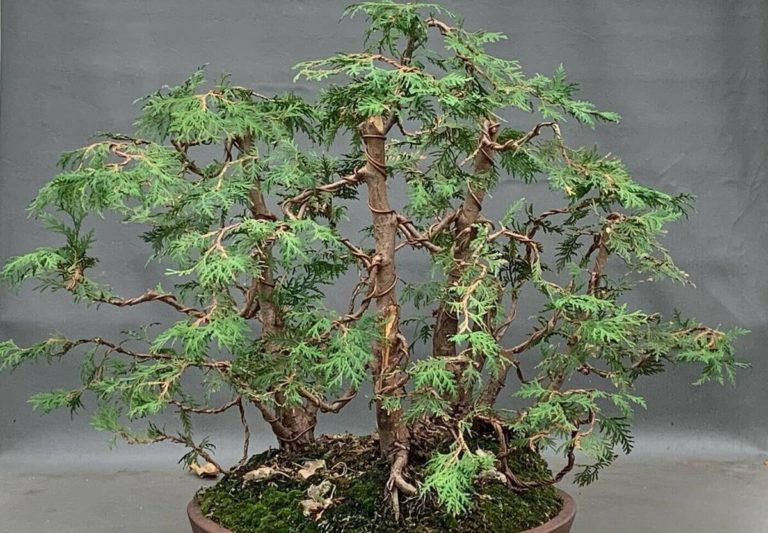Vine Maple Bonsai: A Beautiful Tree in a Miniature World
Bonsai is the art of growing small trees that look just like their big counterparts in nature. One popular bonsai tree is the Vine Maple (scientifically known as Acer circinatum). In this article, we’ll learn about how to grow and care for a Vine Maple Bonsai in a simple and easy-to-understand way.
What is a Vine Maple Bonsai?
Bonsai is an old Japanese art form that has been used to construct miniature versions of plants and trees. The process entails meticulously molding and training the sapling to give the impression of a full-grown tree. Maintaining its health and beauty requires regular care like as trimming and watering. The end result is a charming and lovely little tree suitable for inside or outdoor display.
History and Origins of the Vine Maple Bonsai
The history and roots of the Vine Maple Bonsai may be traced back to ancient China and Japan, where the art of bonsai started. Bonsai as an art form stretches back over a thousand years, having its origins in China before being polished and popularized in Japan.
The Chinese began cultivating miniature trees as early as the 6th century, during the Tang Dynasty. These early efforts were primarily focused on creating small landscapes and representations of nature in trays or shallow containers. The practice evolved over time, and by the 9th century, bonsai-like trees were being grown in pots.
During the Kamakura period in Japan (12th–14th centuries), the Japanese were introduced to bonsai through cultural exchanges with China. The Japanese, with their own artistic sensibilities, adopted and developed the art form further. They embraced bonsai not only as a gardening practice but also as a way to express the beauty of nature and the impermanence of life.
It was during the Edo period in Japan (17th–19th centuries) that bonsai truly flourished and became an established art form. Bonsai masters emerged, and specific aesthetic principles and styles were developed. The Japanese further elevated bonsai from a gardening hobby to an art form that represented harmony, balance, and the essence of nature.
The concept of bonsai eventually spread to other parts of the world during the 19th and 20th centuries, reaching Europe and North America. As horticultural techniques and knowledge advanced, enthusiasts began experimenting with various tree species for bonsai cultivation, including the Vine Maple (Acer circinatum).
Native to the Pacific Northwest of North America, the Vine Maple was valued for its delicate foliage, attractive branching, and seasonal color variations. Bonsai artists recognized its aesthetic potential as a subject for their works. They began cultivating Vine Maple Bonsai by implementing the principles and techniques of bonsai, creating miniature representations of this enchanting tree.
Vine Maple Bonsai is still a popular option among bonsai lovers and collectors today, owing to its distinct traits and visual appeal. It is still cultivated and appreciated as a living piece of art, keeping on the rich history of bonsai customs passed down through the generations.
Vine Maple Bonsai and Their Symbolism
Like all bonsai plants, Vine Maple Bonsai has strong symbolic implications that have been embedded in the art form for ages. The symbolism associated with Vine Maple Bonsai is inextricably linked to the greater symbolism of bonsai in general. Here are a few significant symbolic representations of Vine Maple Bonsai:
Harmony with Nature: Bonsai, including Vine Maple Bonsai, is a way to connect with nature in a peaceful way. The small tree shows how the beauty and vastness of nature can be captured in a small, controlled area. It tells us to enjoy the beauty of nature and find peace and quiet in its company.
Patience and Perseverance: Over time, the art of bonsai necessitates patience, care, and attention. Growing and sculpting a Vine Maple Bonsai requires time and dedication, teaching us the lesson of endurance and the rewards of gradually and methodically cultivating something.
Balance and Harmony: The aesthetic ideals of bonsai stress balance, proportion, and harmony in the overall look of the tree. The delicate and beautiful branches of the Vine Maple Bonsai provide a feeling of equilibrium and oneness between diverse components, expressing the greater importance of balance and harmony in life.
Reflection of Life’s Transience: Vine Maple Bonsai, for example, offers as a profound reminder of life’s impermanence. The tree’s brief lifetime represents the cycles of life, growth, and destruction. It inspires us to treasure the times we have and to accept change with grace.
Adaptability and Resilience: The Vine Maple tree, known for its ability to grow in different conditions, symbolizes adaptability and resilience. As a bonsai, it reminds us of the importance of flexibility and strength in navigating life’s challenges.
Grace and Elegance: Vine Maple Bonsai exudes grace and elegance through its delicate leaves and gracefully arching branches. It embodies the idea of finding beauty in simplicity and refinement.
Hope and Renewal: Vine Maple Bonsai’s seasonal variations, with their brilliant foliage and dormant intervals, depict the cycles of rebirth and optimism. It represents the concept that even in terrible times, there is the possibility of renewal and fresh beginnings.
Vine Maple Bonsai has a variety of symbolic connotations that represent the greater philosophy and principles of bonsai as an art form. Its depiction of harmony, balance, patience, and perseverance ties us to the natural world and teaches us key life lessons, making it a treasured and significant art form for both fans and viewers.

Characteristics of the Vine Maple Bonsai
The Vine Maple Bonsai (Acer circinatum) possesses several distinct characteristics that make it an attractive and sought-after choice among bonsai enthusiasts. Understanding these features is essential for successfully cultivating and appreciating this delightful miniature tree. Here are the key characteristics of the Vine Maple Bonsai:
- Delicate Leaves: The petite and delicate leaves of Vine Maple Bonsai are well-known. The leaves are palmate, which means they have numerous lobes like a hand. The color of the leaves changes with the seasons, going from bright green in the spring and summer to beautiful red, orange, and yellow in the fall.
- Graceful Branching: The Vine Maple tree features lovely thin branching patterns. When grown and sculpted as bonsai, these branches can make an artistic and aesthetically pleasing silhouette. The branches’ elasticity allows for creative manipulation during the shaping process.
- Attractive Bark: The branching patterns on the Vine Maple tree are attractive and slender. When trained and shaped as bonsai, these branches may create an artistic and aesthetically pleasing silhouette. Because of the elasticity of the branches, creative manipulation is possible throughout the shaping process.
- Seasonal Changes: Vine Maple Bonsai showcases captivating seasonal changes, both in its foliage and overall appearance. The transformation of leaf colors during autumn provides a stunning display of nature’s beauty in miniature form.
- Deciduous Nature: Like its full-sized counterpart, Vine Maple Bonsai is a deciduous tree, which means it sheds its leaves in the winter months. During winter dormancy, the bonsai goes through a resting phase, requiring less water and care until spring arrives.
- Compact Size: The Vine Maple is planted as a bonsai in a compact container, which limits root growth and makes the tree’s size manageable. Because of its small size, it can be used in both indoor and outdoor settings, making it an excellent choice for a variety of living areas.
- Hardy Nature: Vine Maple is generally a hardy tree, well-suited for bonsai cultivation. It can tolerate a range of climates and is more forgiving to beginners who are learning the art of bonsai.
- Aesthetic Versatility: Because of its exquisite branching and changing leaves, Vine Maple Bonsai provides creative variety. Because of its versatility, it may be used in a variety of bonsai styles, including formal and casual designs.
- Naturalistic Appearance: When properly cared for and styled, Vine Maple Bonsai can achieve a naturalistic appearance reminiscent of its full-sized counterparts in the wild, providing a sense of tranquility and harmony.
Finally, the delicate leaves, graceful branches, attractive bark, and seasonal color variations of the Vine Maple Bonsai make it unique. It is a fantastic option for bonsai enthusiasts searching for a versatile and aesthetically beautiful addition to their collection due to its modest size and resilience.
Types of Vine Maple Bonsai
The Vine Maple (Acer circinatum) is a bonsai species that offers a variety of varieties and styles for bonsai lovers to study and maintain. The many forms of Vine Maple Bonsai are distinguished by their distinctive shapes, sizes, and aesthetic attributes. Here are a few examples of Vine Maple Bonsai:
1. Formal Upright (Chokkan): The Formal Upright style is characterized by a straight and upright trunk with progressively smaller and horizontal branches as you move towards the top. For Vine Maple Bonsai, this style highlights the graceful and slender branching patterns, creating a balanced and elegant appearance.
2. Informal Upright (Moyogi): The Informal Upright design has a more natural and curved trunk, giving the appearance that the tree was fashioned by natural processes. The flexible branches of the Vine Maple adapt themselves nicely to this form, allowing for beautiful twists and bends in the trunk.
3. Slanting (Shakan): The Slanting style depicts a tree growing at a slant, as if influenced by strong winds or leaning towards a light source. This design emphasizes the tree’s flexible and resilient character, making it seem dynamic and visually appealing.
4. Cascade (Kengai): The Cascade style emulates a tree growing on a steep slope or cliff, with branches cascading downward. While less commonly seen with Vine Maple, this style can be adapted to create a striking and unique bonsai.
5. Semi-Cascade (Han-Kengai): Similar to the Cascade style, the Semi-Cascade style features branches that extend below the edge of the pot but not as dramatically as the full Cascade. This style can add a sense of movement and drama to the Vine Maple Bonsai’s appearance.
6. Windswept (Fukinagashi): The Windswept style depicts a tree formed by high winds, with branches bending in one direction. This technique highlights the inherent flexibility of Vine Maple Bonsai and gives it a feeling of motion and vigor.
7. Multi-Trunk (Ikadabuki): Multiple trunks emerge from the same root base in the Multi-Trunk style. This method may be utilized to produce a forest-like appearance for Vine Maple Bonsai, emphasizing its natural growth pattern in the wild.
8. Broom (Hokidachi): The Broom style features a straight, upright trunk with branches spreading symmetrically and horizontally like a broom. This design can draw attention to the Vine Maple’s distinctive foliage and branching patterns.
Each of these methods allows bonsai lovers to display their creativity and admiration for nature by artistically representing the Vine Maple tree. The Vine Maple Bonsai may be converted into a stunning masterpiece that captures the essence of the natural world in small form with careful pruning and shaping.
How to Grow a Vine Maple Bonsai
Growing a Vine Maple Bonsai is a joyful and gratifying experience that demands patience, attention to detail, and a love of nature. Here’s how to develop a Vine Maple Bonsai step by step:
Obtain a Young Vine Maple Tree: Start by acquiring a young Vine Maple tree from a reputable nursery or bonsai specialty store. Look for a healthy tree with a thick trunk and a desirable branching structure. Younger trees are more flexible and responsive to training.
Select a Suitable Bonsai Pot: Choose a shallow and well-draining bonsai pot that is slightly larger than the tree’s current root system. Ensure the pot has drainage holes to prevent waterlogging.
Potting the Tree: Gently remove the Vine Maple from its nursery container and prune away any damaged or excessively long roots. Position the tree in the center of the bonsai pot, and fill the pot with a well-draining bonsai soil mix. Secure the tree in the pot by carefully adjusting the soil around the roots.
Watering: Water the newly potted Vine Maple thoroughly to help it settle in its new home. Maintain a regular watering schedule, ensuring that the soil remains evenly moist but not waterlogged. Adjust the frequency based on the weather and the tree’s specific needs.
Placement and Sunlight: Select an appropriate site for your Vine Maple Bonsai. It prefers strong, indirect sunshine, thus it prefers filtered sunlight or moderate shade. Keep the bonsai away from high temperatures and strong winds.
Pruning and Shaping: To create the desired bonsai shape, prune the Vine Maple regularly. Trim the branches to promote a balanced and aesthetically pleasing structure. Use wiring techniques to gently shape the branches, but be careful not to damage the tree.
Fertilization: Provide the Vine Maple Bonsai with a balanced fertilizer during the growing season (spring to autumn). Follow the instructions on the fertilizer package to avoid overfeeding, which can harm the tree.
Repotting: Every two to three years, repot the Vine Maple Bonsai to refresh the soil and encourage healthy root growth. Repotting is best done in the early spring before the new growth emerges.
Winter Care: As a deciduous tree, the Vine Maple will go through a period of dormancy in winter. During this time, reduce watering and protect the bonsai from freezing temperatures. Keep it in a sheltered location or use insulating materials to shield it from extreme cold.
Prune and Shape During Dormancy: While the tree is dormant in winter, you can continue light pruning and shaping. However, avoid any major work as the tree is less active during this time.
Remember that cultivating a Vine Maple Bonsai takes time and patience. Regular attention, observation, and an eye for beauty will result in a gorgeous and one-of-a-kind tiny portrayal of this graceful tree. Enjoy the ride as you watch your Vine Maple Bonsai grow and change over time.
Benefits of the Vine Maple Bonsai
Growing a Vine Maple Bonsai may provide several benefits, making it a pleasurable and gratifying experience for bonsai aficionados. Here are some of the main advantages of owning a Vine Maple Bonsai:
- Aesthetics and Beauty: Vine Maple Bonsai is a visually spectacular and pleasant addition to any environment, with its delicate leaves, elegant branching patterns, and lovely bark. Its ever-changing leaf hues give a steady supply of natural beauty and aesthetic appeal throughout the year.
- Stress Relief and Relaxation: Caring for a Vine Maple Bonsai can be a therapeutic and stress-relieving activity. The process of nurturing and shaping the bonsai allows enthusiasts to connect with nature, promoting a sense of calm and relaxation.
- Indoor and Outdoor Decor: Vine Maple Bonsai are adaptable and flexible ornamental items for homes, businesses, and gardens since they can be grown both indoors and outdoors. It may easily fit on tabletops, shelves, or outdoor displays because to its small size.
- Learning and Creativity: Growing a Vine Maple Bonsai is a learning experience that enables enthusiasts to gain knowledge about horticulture, tree care, and bonsai. As people design and shape the tree according to their personal creative tastes, the process fosters creativity.
- Symbolic Meanings: Like other bonsai plants, vine maples have symbolic meanings that include balance, endurance, patience, and harmony with nature. These more sophisticated philosophical and aesthetic concepts may serve as a continual reminder from a Vine Maple Bonsai.
- Connection to Nature: Vine Maple Bonsai horticulture encourages a strong connection to nature. As the tree’s guardians, fans track its development and seasonal changes, deepening their understanding of the natural world.
- Community and Networking: A bonsai enthusiast may interact with like-minded people, exchange experiences, and learn useful advice from seasoned bonsai gardeners by joining clubs or online groups.
- Hobby and Leisure: A Vine Maple Bonsai may be grown and cared for as a rewarding pastime. As the bonsai grows under the gardener’s care, it offers a rewarding and useful way to spend downtime and a sense of achievement.
- Unique and Personal Gift: Giving a Vine Maple Bonsai as a meaningful or unusual gift to friends, family, or coworkers can be done. It is a significant and unique gift that will be treasured for years due to its artistic expression and symbolism.
- Environmental Impact: Bonsai cultivation, including Vine Maple Bonsai, contributes positively to the environment by promoting greenery, air purification, and biodiversity, even on a small scale.
Growing a Vine Maple Bonsai has several advantages, including its visual appeal and stress-relieving properties as well as the chance for education, encouraging creativity, and strengthening a bond with nature. It is an engaging and satisfying hobby that enables people to produce and care for a living work of art in their own environment.
Displaying and Showcasing the Vine Maple Bonsai
The Vine Maple Bonsai should be displayed and appreciated in order to fully appreciate its beauty and creativity. This is a crucial component of bonsai appreciation. A well-presented bonsai has a greater overall effect and better communicates the philosophy and art of cultivation. Following are some suggestions for showing the Vine Maple Bonsai:
Choose the Right Display Stand: Choose a show stand that fits the design and appearance of the Vine Maple Bonsai. The bonsai should be raised to a convenient viewing height by the solid, steady support.
Consider the Background: Place the Vine Maple Bonsai against a backdrop that enhances its beauty and contrasts with the foliage colors. A simple, unobtrusive background, such as a neutral-colored wall or a solid-colored fabric, can draw attention to the bonsai.
Balance and Symmetry: Maintain a feeling of balance and symmetry while placing the bonsai and any additional accent items. A balanced arrangement frequently enhances the Vine Maple’s delicate and elegant traits, giving it a unified and attractive appearance.
Accent Pieces: Enhance the exhibit with complementary accent items like tiny stones, statues, or miniature decorations. These accessories shouldn’t overshadow the bonsai; rather, they should improve its beauty and give a dash of intrigue to the composition as a whole.
Rotate the Bonsai: Regularly rotate the Vine Maple Bonsai on the display stand to ensure even sunlight exposure and promote balanced growth. This also allows viewers to appreciate different angles and perspectives of the bonsai.
Display in Natural Settings: For outdoor displays, consider placing the Vine Maple Bonsai in a garden setting that mimics its natural environment. Surround it with other plants and elements that complement its seasonal changes and overall appearance.
Bonsai Exhibition: Take part in neighborhood bonsai exhibits or shows to show off your Vine Maple Bonsai to more people. Exhibitions of bonsai offer a venue for sharing your work, picking the brains of others, and making friends with other bonsai fans.
Regular Maintenance: Keep the Vine Maple Bonsai well-groomed and free from dust and debris. Regularly check for any pests or diseases and address them promptly to maintain the bonsai’s health and attractiveness.
Lighting: To make sure the Vine Maple Bonsai receives enough natural or artificial light, take into account the illumination in the display area. The bonsai is more aesthetically pleasing when the colors and features are properly lit.
Labeling: If displaying the Vine Maple Bonsai in a public setting or exhibition, provide a label with the tree’s common name (Vine Maple) and scientific name (Acer circinatum) for viewers to identify and appreciate the specific species.
Keep in mind that displaying the Vine Maple Bonsai is a chance to let others enjoy it and appreciate its creative value. When presented and handled with care, bonsai may enthrall visitors and inspire a greater understanding of the complex and exciting world of bonsai.
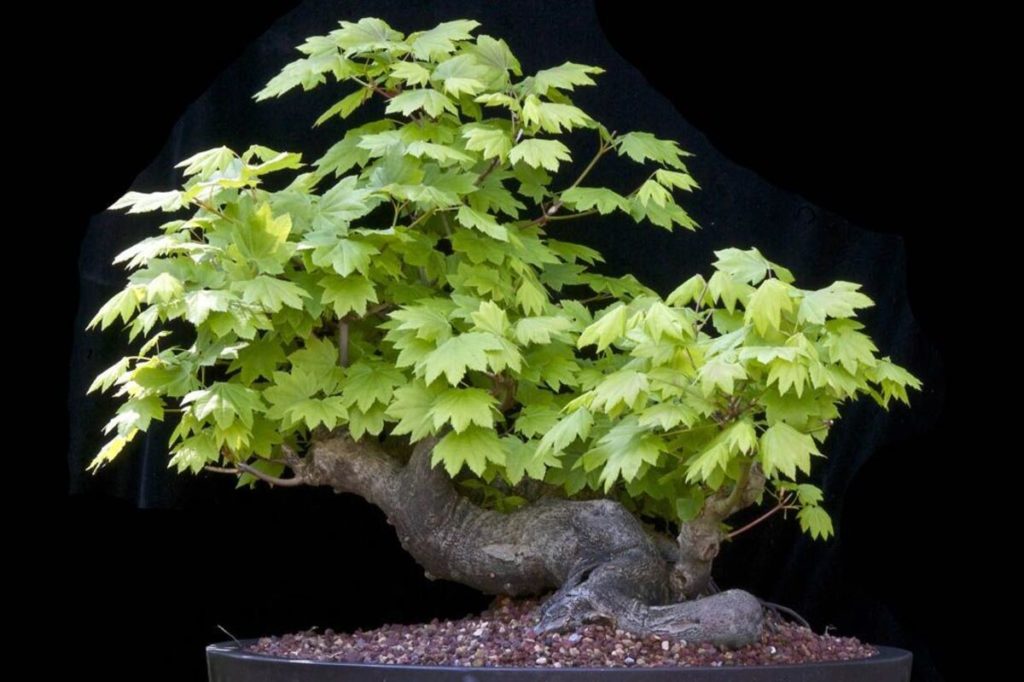
Styling and Design of Vine Maple Bonsai
The Vine Maple Bonsai’s style and design entail training and sculpting the tree to create an aesthetically pleasing and harmonious combination. Like other bonsai trees, the Vine Maple takes careful consideration of both the intended aesthetic vision and its natural qualities. The following are some essential components and methods used in styling and creating a Vine Maple Bonsai:
1. Trunk Selection: Choose a Vine Maple tree with a thick and well-shaped trunk as the starting point for styling. The trunk’s structure and taper are essential for creating an aesthetically pleasing bonsai.
2. Branch Pruning: Begin by pruning the branches to establish the primary structure of the bonsai. Remove any undesirable branches, such as those growing straight up or down, and retain only those that contribute to the desired design.
3. Branch Placement: Position the branches in a way that reflects a natural growth pattern and provides an overall sense of balance. Branches should radiate outward from the trunk, and their sizes should decrease as they move towards the top of the tree.
4. Wiring: Use wiring to gently shape and bend the branches to achieve the desired silhouette. Copper or aluminum wire is commonly used for this purpose. Be cautious not to apply excessive force to avoid damaging the branches.
5. Branch Layering: Branch layering, in which branches are positioned along the trunk in numerous levels at various heights, may add depth and dimension. This method adds visual appeal and gives the appearance of an established tree.
6. Pruning Foliage: Regularly trim and thin out the foliage to maintain an airy and natural appearance. This helps ensure that sunlight reaches all parts of the tree, promoting healthy growth.
7. Seasonal Changes: Showcase the Vine Maple’s stunning foliage hues in the autumn to emphasize the tree’s seasonal changes. For added authenticity in the winter, let the tree experience its normal dormant period.
8. Balance and Proportions: Pay attention to the balance and proportions of the Vine Maple Bonsai. Ensure that no single part of the tree dominates the overall design, and maintain harmony among the trunk, branches, and foliage.
9. Visualization: Visualize the ultimate design you want to attain before you begin styling. Making decisions about trimming and wiring is aided by having a clear vision of the intended result.
10. Patience and Adaptability: Bonsai styling is a patient and ongoing process. Allow the Vine Maple Bonsai to respond and adapt to the shaping gradually. Adjustments may be necessary over time to achieve the desired form.
In conclusion, styling and designing a Vine Maple Bonsai involve a blend of horticultural knowledge, artistic vision, and sensitivity to the tree’s natural attributes. The result is a captivating miniature representation of the Vine Maple tree, embodying the beauty of nature and the artistry of bonsai cultivation.
How to Care for and Maintain a Vine Maple Bonsai
Caring for and maintaining a Vine Maple Bonsai is crucial to ensuring its health, beauty, and longevity. The following guidelines will help you properly care for your Vine Maple Bonsai:
Watering:
- Water the bonsai thoroughly, but avoid waterlogging the soil. Allow the top inch of the soil to dry slightly before watering again.
- Adjust the watering frequency based on the climate and season. In warmer weather, the bonsai may require more frequent watering.
Sunlight:
- Place the Vine Maple Bonsai in a location with bright, indirect sunlight or partial shade. Avoid exposing it to the intense midday sun to prevent leaf scorching.
Soil and Fertilizer:
- Use well-draining bonsai soil to promote healthy root growth. The soil should retain enough moisture while allowing excess water to drain.
- Apply a balanced, liquid fertilizer during the growing season (spring to autumn) to provide essential nutrients to the bonsai. Follow the manufacturer’s instructions for proper dilution and frequency.
Pruning and Shaping:
- Regularly prune the Vine Maple Bonsai to maintain its desired shape and promote ramification (the development of finer branches).
- Use sharp and clean bonsai pruning tools to make clean cuts, preventing unnecessary stress on the tree.
Wiring and Shaping:
- Use wiring to gently shape the branches, guiding them into the desired positions. Be careful not to wrap the wire too tightly to avoid damaging the bark.
- Remove the wiring after a few months, or when the branches have set in their new positions, to prevent wire scarring.
Repotting:
- Repot the Vine Maple Bonsai every two to three years, preferably in the early spring before new growth starts. Repotting helps refresh the soil and promote healthy root development.
- Prune the roots to remove any circling or tangled ones before repotting.
Winter Care:
- During the winter, reduce watering to prevent overhydration as the bonsai’s growth slows down.
- Protect the Vine Maple Bonsai from freezing temperatures by placing it in a sheltered location or using insulating materials.
Pest and Disease Management:
- Regularly inspect the bonsai for signs of pests or diseases. Treat any infestations or issues promptly with appropriate remedies or treatments.
Display and Aesthetics:
- Rotate the bonsai regularly to ensure even sunlight exposure and promote balanced growth.
- Use a suitable display stand and consider accent pieces to enhance the overall presentation of the Vine Maple Bonsai.
Patience and Observation:
- Bonsai care requires patience and observation. Monitor the tree’s health, growth, and response to care, making adjustments as needed.
- By providing proper care and attention, your Vine Maple Bonsai will flourish and bring joy and beauty to your living space for many years to come.
Vine Maple Bonsai Care sheet
| Aspect | Care Tips |
| Watering | Water thoroughly, ensuring the soil is evenly moist but not waterlogged. |
| Adjust watering frequency based on weather conditions and the tree’s needs. | |
| Avoid letting the soil dry out completely, as it can stress the bonsai. | |
| Sunlight | Place in bright, indirect sunlight or partial shade. |
| Protect from intense midday sun to prevent leaf scorching. | |
| Temperature | Vine Maple Bonsai prefers moderate temperatures. |
| Protect from extreme heat and cold to avoid stress on the tree. | |
| Humidity | Moderate humidity levels are generally suitable. |
| Mist the foliage occasionally to maintain humidity. | |
| Fertilization | Use a balanced liquid fertilizer during the growing season (spring to autumn). |
| Follow the recommended dosage and frequency on the fertilizer package. | |
| Pruning and Trimming | Regularly prune to maintain shape and promote ramification. |
| Trim excess growth and remove any crossing or diseased branches. | |
| Wiring and Styling | Use wiring to shape branches gently. |
| Avoid wiring during the growing season to prevent wire scarring. | |
| Remove wires after a few months to prevent constriction. | |
| Repotting | Repot every two to three years during early spring. |
| Trim the roots and refresh the soil to promote healthy root growth. | |
| Pest and Disease Control | Regularly inspect for pests and diseases. |
| Treat infestations or issues promptly using appropriate remedies. | |
| Winter Care | Reduce watering during the dormant winter period. |
| Protect the bonsai from freezing temperatures and harsh winter conditions. | |
| Regular Maintenance | Rotate the bonsai regularly for even sunlight exposure. |
| Groom the bonsai, removing dust and debris from the foliage. | |
| Observe the tree’s health and growth regularly, making necessary adjustments. |
Note: The care tips provided in the table are general guidelines. The specific needs of each Vine Maple Bonsai may vary based on factors such as location, climate, and individual tree health. Regular observation and attentiveness to the tree’s response to care are essential for successful bonsai cultivation.
Conclusion
Growing a Vine Maple Bonsai is a rewarding experience. With a little tender loving care, you’ll have a lovely, little tree to adore for years to come. Have fun building your little natural environment!
FAQ
Q: What is a Vine Maple Bonsai?
A: A Vine Maple Bonsai is a small, artistically cultivated version of the Vine Maple tree (Acer circinatum) that is shaped and trained through the art of bonsai. It features delicate leaves, graceful branches, and attractive bark, creating a miniature representation of the full-sized tree in nature.
Q: How do I care for a Vine Maple Bonsai?
A: Care for a Vine Maple Bonsai includes proper watering (moist but not waterlogged), placement in bright, indirect sunlight or partial shade, using well-draining soil, regular pruning to maintain shape, and balanced fertilization during the growing season.
Q: Can I keep a Vine Maple Bonsai indoors?
A: Yes, you can keep a Vine Maple Bonsai indoors, but it requires proper lighting and humidity. Place it near a bright window with filtered sunlight, and mist the foliage occasionally to maintain humidity.
Q: How often should I water my Vine Maple Bonsai?
A: Water your Vine Maple Bonsai when the top inch of the soil begins to dry slightly. The frequency may vary depending on the weather and the tree’s specific needs, but avoid letting the soil dry out completely.
Q: When should I repot my Vine Maple Bonsai?
A: Repot your Vine Maple Bonsai every two to three years during the early spring before new growth starts. Repotting helps refresh the soil and promote healthy root development.
Q: What is the best location for my Vine Maple Bonsai?
A: Choose a location with bright, indirect sunlight or partial shade for your Vine Maple Bonsai. Protect it from the intense midday sun to prevent leaf scorching.
Q: How do I shape my Vine Maple Bonsai?
A: Use gentle wiring techniques to shape the branches of your Vine Maple Bonsai. Be cautious not to wrap the wire too tightly to avoid damaging the bark. Regular pruning also helps maintain its desired shape.
Q: Can I display my Vine Maple Bonsai outdoors?
A: Yes, you can display your Vine Maple Bonsai outdoors. It thrives in outdoor conditions as long as it is protected from extreme temperatures and strong winds.
Q: How do I protect my Vine Maple Bonsai during the winter?
A: During winter, reduce watering to prevent overhydration and protect the Vine Maple Bonsai from freezing temperatures by placing it in a sheltered location or using insulating materials.
Q: What are the unique characteristics of the Vine Maple Bonsai?
A10: The Vine Maple Bonsai features delicate leaves, graceful branching patterns, attractive bark, and captivating seasonal color changes during autumn. Its compact size and hardiness make it a popular choice among bonsai enthusiasts.
Also Read:





